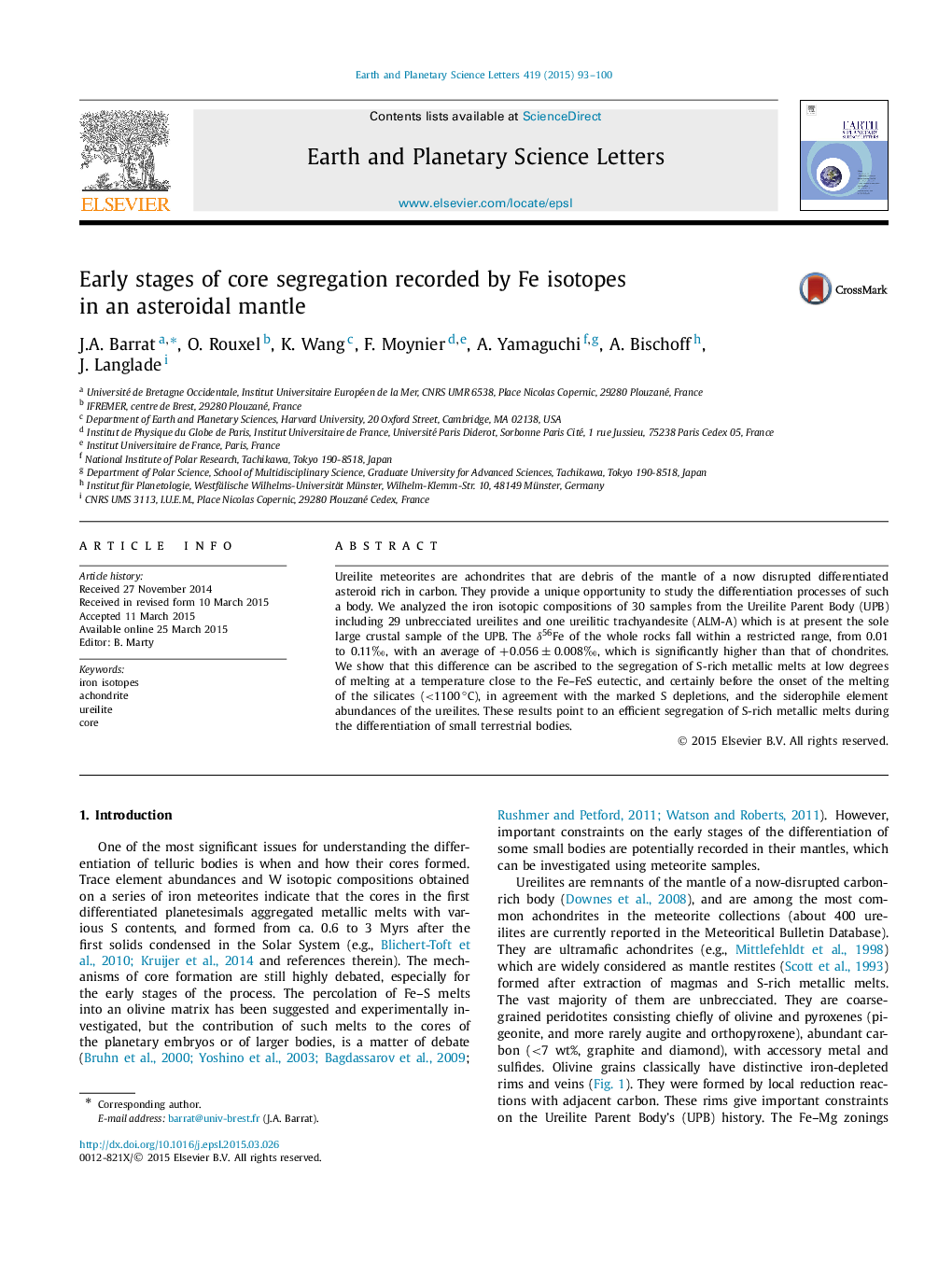| Article ID | Journal | Published Year | Pages | File Type |
|---|---|---|---|---|
| 6428490 | Earth and Planetary Science Letters | 2015 | 8 Pages |
â¢Ureilites displays δ56Fe values higher than average chondrite.â¢Segregation of Fe-sulfide melts explains the high δ56Fe values in ureilites.â¢Formation of a core can begin at very low degrees of melting through the circulation of a Fe-S melt through a silicate mantle.
Ureilite meteorites are achondrites that are debris of the mantle of a now disrupted differentiated asteroid rich in carbon. They provide a unique opportunity to study the differentiation processes of such a body. We analyzed the iron isotopic compositions of 30 samples from the Ureilite Parent Body (UPB) including 29 unbrecciated ureilites and one ureilitic trachyandesite (ALM-A) which is at present the sole large crustal sample of the UPB. The δ56Fe of the whole rocks fall within a restricted range, from 0.01 to 0.11â°, with an average of +0.056±0.008â°, which is significantly higher than that of chondrites. We show that this difference can be ascribed to the segregation of S-rich metallic melts at low degrees of melting at a temperature close to the Fe-FeS eutectic, and certainly before the onset of the melting of the silicates (<1100°C), in agreement with the marked S depletions, and the siderophile element abundances of the ureilites. These results point to an efficient segregation of S-rich metallic melts during the differentiation of small terrestrial bodies.
